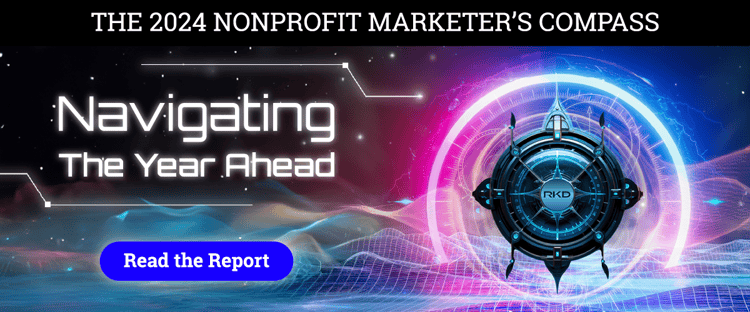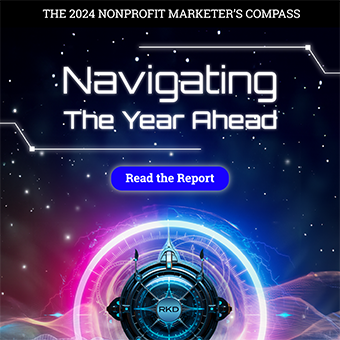Last summer, I made a pretty bold statement. I declared—to the full nonprofit community—that fundraising is broken.
I expected to ruffle a few feathers, but I was blown away by the support I received throughout the sector.
So many people agreed that nonprofits are trapped by fundraising execution. We’re hamsters running on a wheel—working feverishly but getting nowhere.
So many people showed their support by committing to #quitbadfundraising. They wore T-shirts, wrote on placards and made their pledges across LinkedIn.
But in the months that followed, I kept hearing a simple question: OK, what’s next?
How do we change our mindset and transform what has worked for decades? How do we rebuild trust with donors and establish meaningful relationships with them? Now that we’ve quit bad fundraising, what does good fundraising look like?
The destination was clear, but we didn’t have a map to reach it.
We were in danger of falling into the same trap that so often plagues us in the nonprofit space: focusing on the journey’s end, not the path to get there.
Nonprofit missions are full of bold statements to solve huge problems:
- Curing cancer
- Ending hunger
- Protecting the environment
- Eliminating homelessness
The list goes on and on.
We tend to picture the perfect ending and wonder, “How will I ever get there?” It can all feel so overwhelming.
If we’re truly going quit bad fundraising, we need to take actionable steps. We need a plan. We need a guide.
That’s why we at RKD Group have developed "The 2024 Nonprofit Marketer’s Compass."
We took a look at some of the major challenges we saw across the industry and where we could step in and help, based upon our knowledge and experience. This e-book lays out in great detail four beacons to help us navigate through this transformation.
Here’s a quick summary:
Connect the Dots
First-party data is absolutely essential to marketing and fundraising today. Nonprofits must integrate their data sources to deliver a positive, seamless donor experience.
That’s because the data game is changing right in front of our eyes. Tech companies like Google and Apple are implementing privacy rules that restrict or outright eliminate third-party data.
We can’t easily track behavior across the web like we once did, but we can track behavior across our own properties—website, email, texting, etc. Doing so requires a seamless connection between those properties.
It also requires the right platforms. Nonprofits need systems and products that play nicely with one another. Otherwise, you’ll be stuck with data silos.
Success can no longer be defined by the volume of data we can hoard but by the connection and accessibility of that data to drive engagement with the real-world donor.
Those who can harness the power within their data will be the winners in the future.
Think Dimensionally
In the past, we’ve said we want to understand our donors better. Now, we have the ability to do so.
With a backbone built upon data, we can use additional insights to appreciate donors as people, not transactions. We can consider the different dimensions of their humanity—their interests, identities and motivations—as we look to first build trust with them and later build strong relationships.
This is critical because commercial brands have raised the bar on how they engage with customers today versus ten or even five years ago.
We, as consumers, have all given up a certain level of privacy for more convenience. We accept that a company like Amazon collects our data, because it leads to cool product recommendations, automated receipts and instant deliveries.
We now expect these conveniences from every organization—not just Amazon-sized behemoths. We get frustrated when an online experience is a little clunky or customer service is a bit lacking.
Look at your personalized wine match from Bright Cellars (a company with fewer than 50 employees). Or think about the text you received from your local dry cleaner to let you know when your order is ready.
This is an area in which nonprofits must make up a lot of ground to catch the commercial sector. We need to craft better experiences that show how we understand and appreciate the people who support us.
Be You
Social media has also changed communication.
For better or worse, it has removed the filter of formal media and empowered people to broadcast their own message to the world. Through YouTube, Facebook, Instagram and TikTok, regular folks have risen to levels of fame by simply being themselves.
Paired with the expectation of seamless experiences comes an expectation of authenticity and transparency. People want to get to know the real you, the people behind the logo and the mission.
This doesn’t mean simply doing a better job of talking “at” supporters. It’s about using the dimensional data to better understand the part of “you” that each donor finds compelling. It’s about building a real, two-sided conversation that truly involves donors.
That means nonprofits must pull down the curtain and let people in. At the same time, they must be open to feedback, listening to donors’ opinions and interests.
Plan with Care
It’s well known that nonprofits have significant resource challenges. Combine that with a huge, long-term goal like building a fully connected marketing program that delivers seamless experiences and authentic interactions, and all of this can seem … well … exhausting.
But it’s important to remember that real change comes from setting actionable steps toward progress. Rather than thinking about the perfect omnichannel donor journey across 11 channels, start small by connecting two channels and delivering a two-step, unified experience across both.
Building the right culture is also a critical element of transformation. Make people your top priority, and help them understand the vision as well as the steps it will take to achieve it.
With these four beacons to guide us on our path, we can propel the nonprofit industry forward to meet donor expectations in this new era. I’m committed to this journey, and I’d love for you to join me.






Leave a comment: